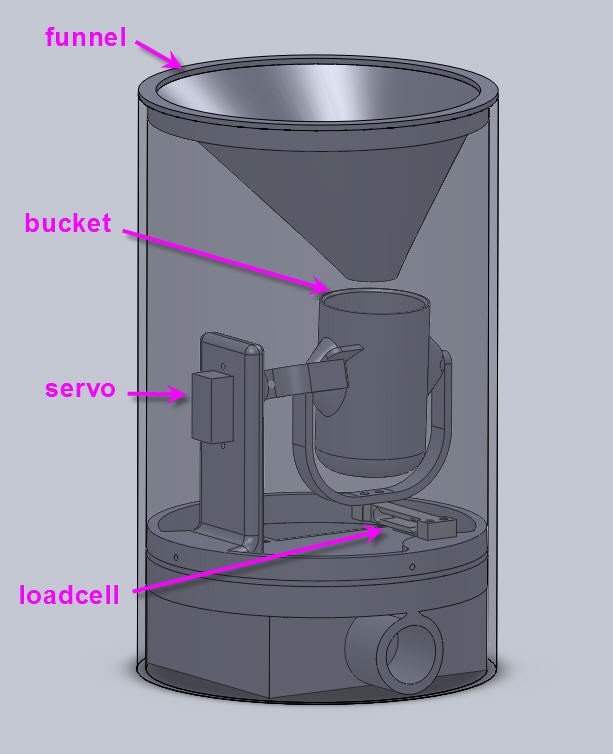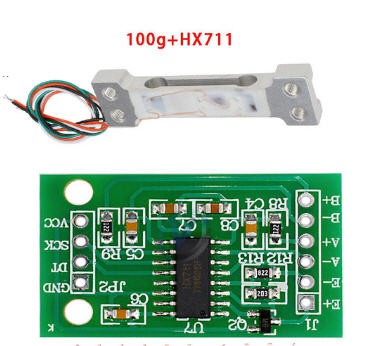The principle of operation of a weighing rain gauge is simple:
- collect the rain into a bucket with a calibrated funnel
- weight the bucket
- from time to time empty the bucket
Here is my 3D printed design (stl files available on thingiverse)

The funnel
The inner diameter of this funnel is precisely 112.83mm. Thus its surface is Pi x 112.83² / 4 / 1000000 = 0.01 m²
That is 1 / 100 m²
In countries that use the metric measurement system, meteorologists measure rain volume received in a unit of time which is usually expressed in the form of millimeters (mm) per hour. However, 1 mm of rain refers to the "depth" of rain that would be received in 1 meter² (m²) or a square of one meter in length and width.
Knowing that 1mm of rain corresponds to 1 liter of water, that is 1 kg of mass, our funnel will sample 1/100 of the rain received on 1 m².
Thus if we weight this sample (in kg) we will get 1/100th of the rain level. Simple !
The bucket
This bucket should be as simple and light as possible. It should not touch the servo arm when in idle position. This allows accurate reading of the weight (bucket + rain).
It should have a center of gravity below the axis of rotation to keep a vertical position when empty (or with rain inside).
Its weight is 23g, which should be considered as the "tare" of the load cell. (however tare is automatically done during the measurement process)!
The loadcell
I have choosen a very sensitive loadcell

It has an accuracy of 0.1g and a max load of 100g
Knowing that the bucket weights 23g, when empty, we have a max volume of water of 100-23 = 77g
Let say 50g max before emptying the bucket with the servo.
50g of water into the funnel would represent a rain fall of 0.05 x 100 = 5mm
If we empty the bucket every 2 minutes (that is 30 times per hour) we could measure up to 5*30 = 150mm of water per hour. Which is an enormous rain fall in France... Have a look to national statistics on this site
On the other side, this load cell can measure down to 0.1g that is 0.1 / 1000 x 100 = 0,01 mm of rain (negligible)
To summarize: our Weather Station could measure between 0 and 150mm of rain per hour.
tightness
The 3d printed enclosure takes care of tightness of the system.
The funnel is protecting the servo, but the bucket can drop water on the bottom side of the Weather Station. This is the reason why the electronics is hidden into a waterproof box. Bottom vents are however made into this box to allow cooling of the temperature sensor...
 JP Gleyzes
JP Gleyzes
Discussions
Become a Hackaday.io Member
Create an account to leave a comment. Already have an account? Log In.